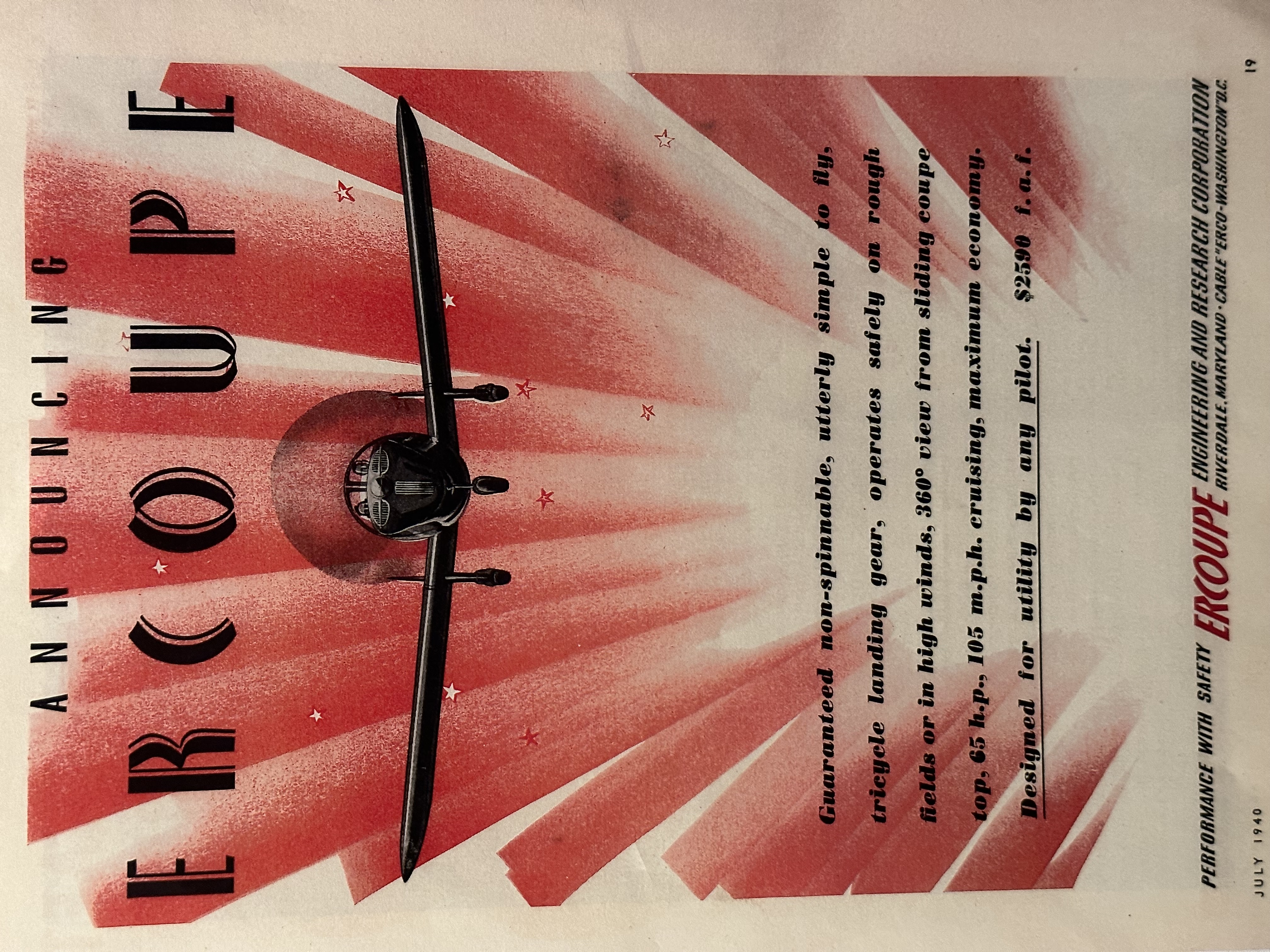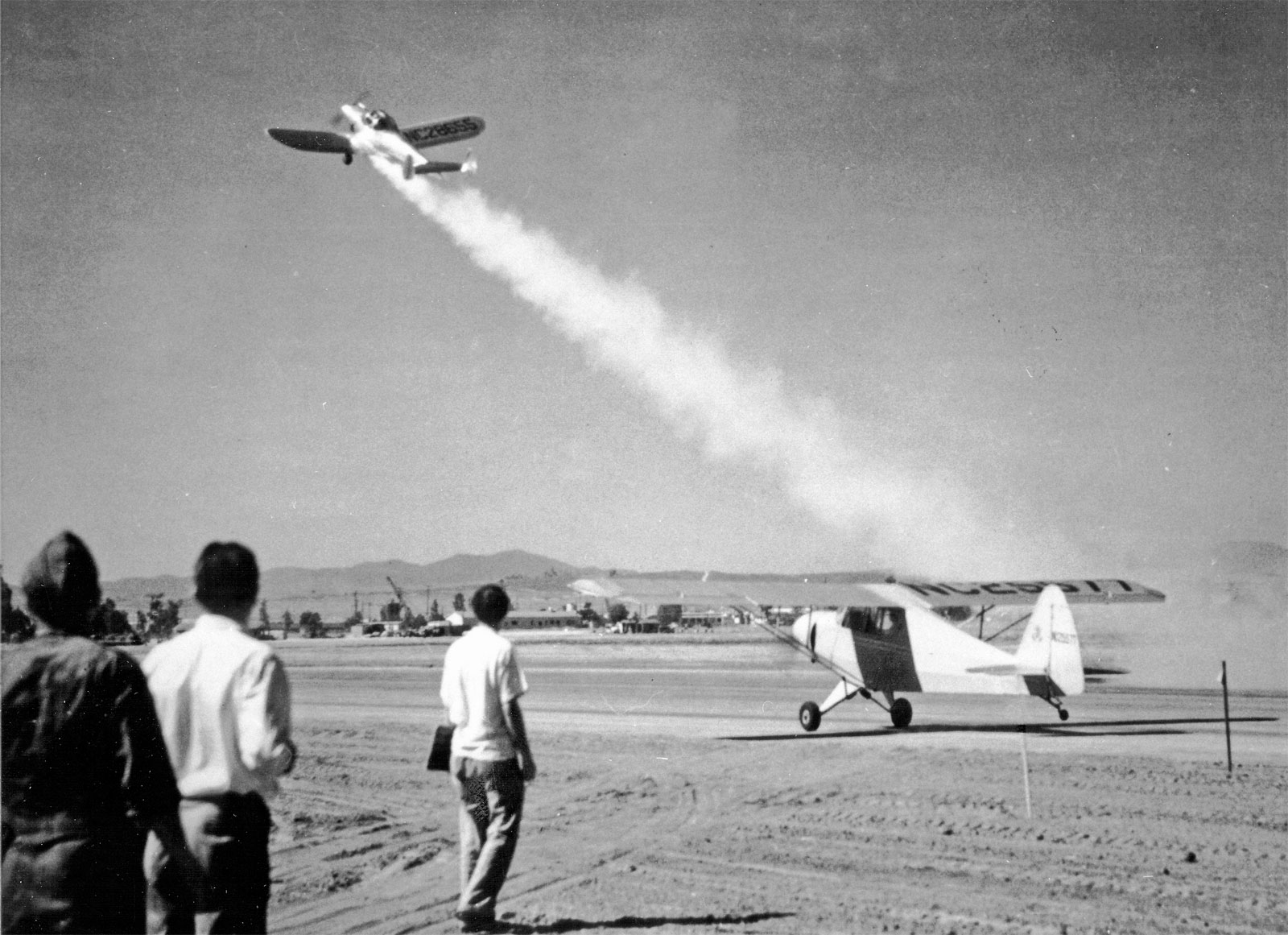Ercoupe History
Frequently mistaken as the name of the manufacturer, “Ercoupe” is actually the name of this model of airplane. The original manufacturer was Engineering and Research Corporation – often abbreviated ERCO. The company’s marketing department simply added “upe” to create Ercoupe.
Designed in the late 1930’s by renowned aeronautical engineer, Fred Wieck, the Ercoupe is a very significant aircraft because of its many innovative features and capabilities. Unlike all other airplanes of its day, the Ercoupe’s design makes it incapable of spinning out of control. This was a huge technological advance in safety. Its twin tails make it more stable by keeping the vertical components out of the propeller wash. The Ercoupe was the first civil aircraft produced in any quantity to have a nose wheel instead of a tailwheel and a fully enclosed engine – features that are now the norm for nearly all aircraft.
The Ercoupe was designed so that anyone could fly it with just a few hours of training. It has no rudder pedals because the rudders, the ailerons and the nose wheel are all interconnected with the control wheel in the cockpit. The pilot can make turns in the air and steer on the ground by simply turning the control wheel – like driving a car. However, because of this unique control system, landing an Ercoupe in a crosswind requires a technique completely different from conventional airplanes. According to the Ercoupe 415-C pilot’s manual, “this brings up a change in point of view that an experienced pilot of conventional airplanes must pass through before he can be satisfied with two control operation (without rudder pedals). He has been accustomed to controlling the attitude of his airplane about all three axes: as well as controlling the flight path and speed. With two control operation he must be willing to rely on the stability of the landing gear to handle the drift in a cross wind landing.”
Ercoupes were actually sold directly to the general public through department stores like Macy’s and JC Penney as well as through dealerships. They were also affordable. With standard equipment they were priced at $3,450 – two-thirds of the 1946 average home cost.

Another historical footnote for the Ercoupe was that the first JATO (Jet Assisted Takeoff) was tested on the Ercoupe at March Field, California in 1941. This led to the foundation of the Jet Propulsion Laboratory.

A total of 5,685 Ercoupes were built by the six different companies that owned the aircraft’s FAA design approval certificate during its thirty years of production. About 1,000 are still on the FAA active aircraft registry. Virginia Vintage Aircraft Museum operates two of the 4,261 Ercoupes built by the original company in 1946. The paint schemes of these two 415-C Ercoupes today are tributes to the Training Command units of the U.S. Navy and the U.S. Air Force.
Ercoupes have climb and cruise performances comparable to a Cessna 150 and similar aircraft.
- Engine: Continental C-85, 4 cylinders, 85 horsepower
- Top Speed: 110 mph
- Cruise: 95-100 mph
- Ceiling: 13,000 feet
Resources for additional information:
Fearless Flying - The Ercoupe Story --- a YouTube video by Ercoupe aficionado, Don Abbott, on the history of the Ercoupe
The Ercoupe - a book by Stanley G. Thomas, foreword by Fred Weick. “The definitive history of this classic aircraft and its remarkable designer, Fred Weick."
Ercoupe Owners Club: Ercoupe.org
Aviation History: Erco Ercoupe - AOPA
The Rise and Fall of the Plane “Anyone Could Fly” - Smithsonian Magazine